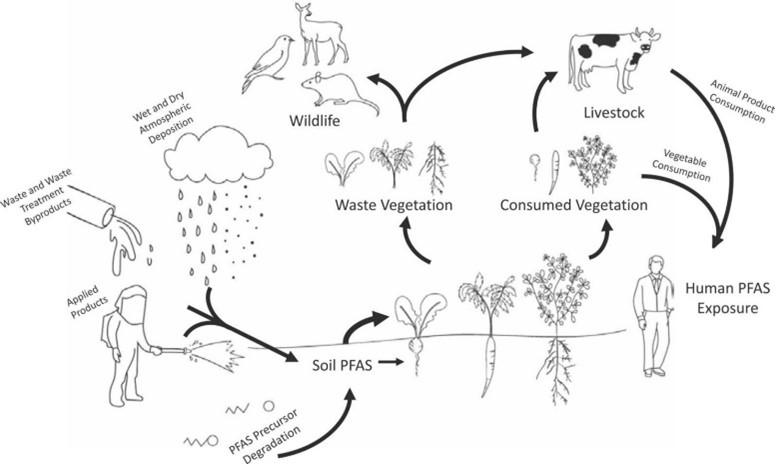High levels of PFAS in commonly used insecticides in the US

Expanding the list of potential PFAS contamination sources
The most common characterized sources of environmental PFAS contamination are associated with wastewater, firefighting foam, products containing PFAS and PFAS precursor manufacturing and use. This list, however, is not comprehensive, especially when it comes to agricultural or rural communities. In 2020, the United States’ EPA allocated five million dollar for new research on managing PFAS in agricultural and rural communities.
Control group sets alarm bells ringing
In a trial run of a prior study on plant uptake of PFAS, it was discovered that there was detectable PFAS contamination in control plant samples grown in a research laboratory greenhouse. Further examination identified PFAS in the soil, in other research plants grown on site and in various insecticides used on the site. The objective of the additional study by Steven Lasee and his team at Texas Tech University, was to characterize the PFAS found in the tested insecticide and to attempt to connect them to those found in the soil. In addition, suspect screening was conducted on the insecticide products in an effort to identify possible “unknown” PFAS in the products.
Alarming results
The results of this study revealed a previously unknown potential PFAS contamination source for rural and agricultural environments: PFOS was found in 6 of the 10 tested insecticides. Further analysis of soil and plant samples collected at the site found several additional PFAS, with PFOS being the most prominent. Suspect screening on the formulations provided several suspected PFAS in addition to the 24 targeted analyzed PFAS in 7 of the 10 samples, one of which showed no PFAS during targeted analysis.
Significance of PFAS in pesticides
Years of continuous use of PFAS (precursor) containing pesticides could lead to significant concentration of PFAS in the soil. Future use of soils treated with PFAS contaminated pesticides for other crops or pesticide drift could lead to PFAS concentrations in crops used for human or animal consumption. This study only characterized PFAS concentrations in 10 different insecticides so further investigation of a wider variety of pesticides as potential PFAS contamination sources should be done to better understand the PFAS exposure risk pesticides could present.
The study “Targeted analysis and Total Oxidizable Precursor assay of several insecticides for PFAS” (Steven Lasee et al) was published in the Journal of Hazardous Materials Letters, Volume 3, November 2022 and can be found here.
EmConSoil coordinator
- Address
- Stationsstraat 110
2800 Mechelen
Route and accessibility - Telephone
- +32 15 284 284
